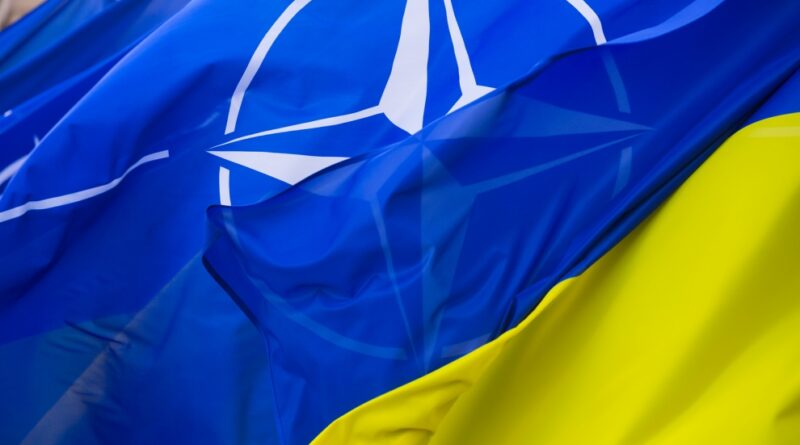Before Ukraine Crisis: Conflict on the Borders of Europe
Before the invasion began.
Key Actors:
- North Atlantic Treaty Organization (NATO); an intergovernmental military alliance between 27 European countries, two North American countries, and one Eurasian country
- Ukraine; a country in Eastern Europe, the second-largest country by area in Europe after Russia
- Russia, the Russian federation; a country spanning Eastern Europe and Northern Asia. Largest country in the world by area
Background
The Ukraine-Russia conflict goes back years, starting in 2013 with the ‘Euromaiden’ protests after the former Ukrainian president Viktor Yanukovych chose close ties with Russia over a free-trade with the EU. In the following months protests became increasingly violent and Yanukovych was impeached. Afterwards Russia annexes the Crimean Peninsula and Pro-Russian separatists take over the Donbas region causing a civil war, it is believed that the Kremlin supported these rebels, though they deny involvement. Over the next several years Canada puts sanction on Russian individuals and companies as well as trade agreements with Ukraine. The government also sends troops to train Ukrainian security forces
Starting in November 2021 satellite imagery show massive buildup of Russian forces on their border with Ukraine, and the situation slowly escalates, with Russia making demands that NATO ban Ukraine from joining and many countries threatening harsh economic sanctions if Russia invades. The US has also deployed several thousand troops to eastern NATO territories to protect their interests there.
A Generalization
As Russia and Ukraine both positioned troops and equipment on their borders, the tensions between Russia and the West harbored fears for a potential invasion. Russia had demanded that NATO halt the eastern expansion of the alliance as Ukraine pushes to become a member of NATO. Meanwhile, the U.S. has deployed troops to NATO allies in Eastern Europe and the White House urges the Kremlin to respect Ukrainian sovereignty as well as promising to retaliate with sanctions if Russia continues her aggression.
New Accusations
On February 3rd, the U.S. claimed that Russia developed had false-flag plot to stage an attack by Ukrainian forces as an excuse for a pretext to take military action against its neighbour; the U.S. and the Pentagon have not provided information backing up the claims as the intelligence for the fake attack was declassified, shared (only?) with Ukrainian and European allies. This was the latest example of the declassification of intelligence for sharing with allies by the Biden administration as a tactic to foil Russian disinformation. Despite this the U.S. makes clear that Russia always sought a pretext to invade. The Kremlin immediately dismissed these reports, saying there have been similar accusations in the past but they have amounted to nothing.
What Happens Next
NATO says that if Russia goes big, so will they. Although this is mostly restricted to declarations that they will impose sanctions against Russia and not taking military action, strong sanctions are still considered if the Kremlin chooses a lesser form of aggression. Many countries have faith that diplomacy can resolve the situation and are investing resources towards diplomacy rather than the potential for war. Many officials state that the possibility of invasion was low, but it must be considered and planned for as an invasion could spark a humanitarian disaster beyond the consequences of full scale warfare. The situation is unpredictable as one mistake could waste months or years of diplomacy.
Another consideration is if Russia invades and the West does not intervene with force, the world does not know if Russia will continue their expansion after being shown they can get away with a military invasion after the rest of the West only imposes sanctions on Russia.
‘A Timeline of Major Events Leading up to the Current Russia-Ukraine Crisis’. CTVNews, 23 Jan. 2022, https://www.ctvnews.ca/world/a-timeline-of-major-events-leading-up-to-the-current-russia-ukraine-crisis-1.5751379.
Press ·, The Associated. ‘U.S. Claims Russia Has Developed Elaborate False-Flag Plot for Ukraine | CBC News’. CBC, https://www.cbc.ca/news/world/ukraine-russia-false-flag-1.6338428. Accessed 8 Feb. 2022.
‘Ukraine: Conflict at the Crossroads of Europe and Russia’. Council on Foreign Relations, https://www.cfr.org/backgrounder/ukraine-conflict-crossroads-europe-and-russia. Accessed 8 Feb. 2022.
‘Ukraine Crisis: Timeline’. BBC News, 13 Nov. 2014. www.bbc.com, https://www.bbc.com/news/world-middle-east-26248275.
‘What If Russia Invades Ukraine (Again)? Consider These Options for Sanctions Escalation.’ Atlantic Council, 22 Jan. 2022, https://www.atlanticcouncil.org/blogs/new-atlanticist/what-if-russia-invades-ukraine-again-consider-these-options-for-sanctions-escalation/.
https://emerging-europe.com/wp-content/uploads/2018/03/bigstock-the-national-flags-of-ukraine-194660620-990×556.jpg

